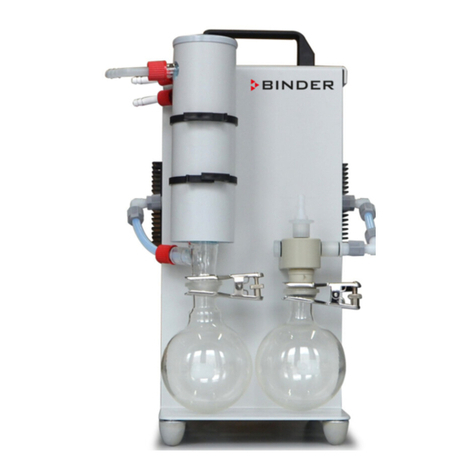
VAP 1 / VAP 2 06/2020 Page 2/52
Contents
1. SAFETY..................................................................................................................4
1.1 Personnel Qualification.......................................................................................................................4
1.2 Operating manual................................................................................................................................4
1.3 Legal considerations...........................................................................................................................4
1.4 Structure of the safety instructions......................................................................................................5
1.4.1 Signal word panel .....................................................................................................................5
1.4.2 Safety alert symbol ...................................................................................................................5
1.4.3 Pictograms................................................................................................................................6
1.4.4 Word message panel structure.................................................................................................6
1.5 Localization / position of safety labels on the device..........................................................................7
1.6 Type plate............................................................................................................................................8
1.7 General safety instructions on installing and operating......................................................................9
1.8 Intended use .....................................................................................................................................11
1.9 Foreseeable Misuse..........................................................................................................................12
1.10 Residual Risks ..................................................................................................................................13
1.11 Operating instructions .......................................................................................................................14
1.12 Measures to prevent accidents.........................................................................................................15
2. DEVICE DESCRIPTION.......................................................................................16
2.1 Device overview................................................................................................................................17
3. COMPLETENESS OF DELIVERY, TRANSPORTATION, STORAGE, AND
INSTALLATION....................................................................................................18
3.1 Scope of delivery...............................................................................................................................18
3.2 Unpacking, and checking the equipment..........................................................................................18
3.3 Assembly...........................................................................................................................................19
3.4 Guidelines for safe transportation.....................................................................................................20
3.5 Storage..............................................................................................................................................20
3.6 Location of installation and ambient conditions ................................................................................20
4. INSTALLATION AND CONNECTIONS ...............................................................21
4.1 Vacuum connection...........................................................................................................................21
4.2 Electrical connection.........................................................................................................................23
5. START UP............................................................................................................24
5.1 Turning on the device........................................................................................................................24
5.2 Adjusting the gas ballast...................................................................................................................25
6. OPERATION.........................................................................................................25
6.1 Daily inspection.................................................................................................................................25
6.2 Removing and emptying the condensate catchpot...........................................................................26
7. CLEANING AND DECONTAMINATION..............................................................26
7.1 Cleaning............................................................................................................................................27
7.2 Decontamination / chemical disinfection of the device .....................................................................28
8. MAINTENANCE AND SERVICE, TROUBLESHOOTING, REPAIR, TESTING...29
8.1 General information, personnel qualification.....................................................................................29
8.2 Maintenance intervals, service..........................................................................................................30
8.3 Simple troubleshooting......................................................................................................................30
8.4 Maintenance by the operator ............................................................................................................31
8.4.1 Replacing the form diaphragm, valves, and O-rings ..............................................................32
8.4.2 Function test ...........................................................................................................................34
8.5 Sending the device back to BINDER GmbH.....................................................................................34




























